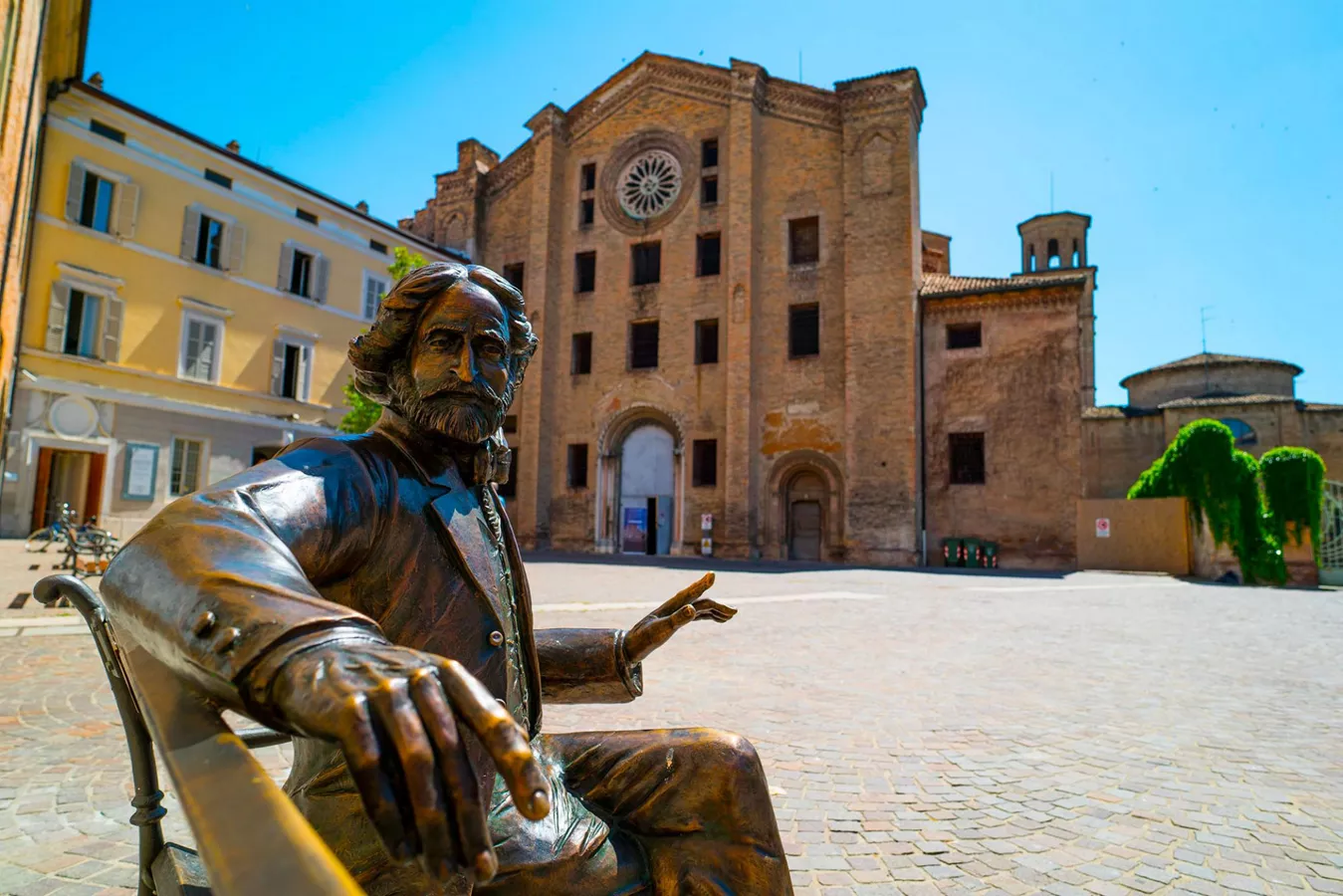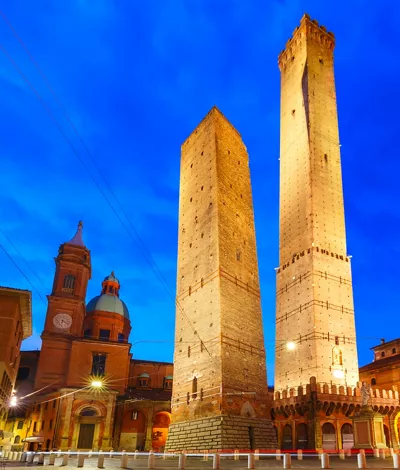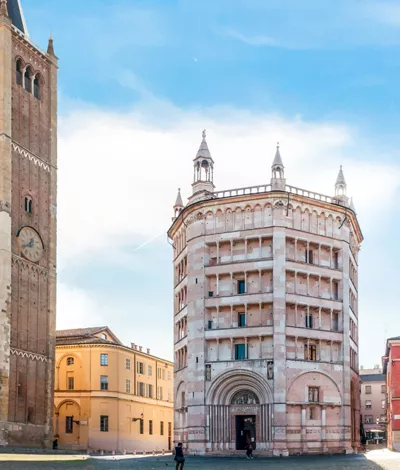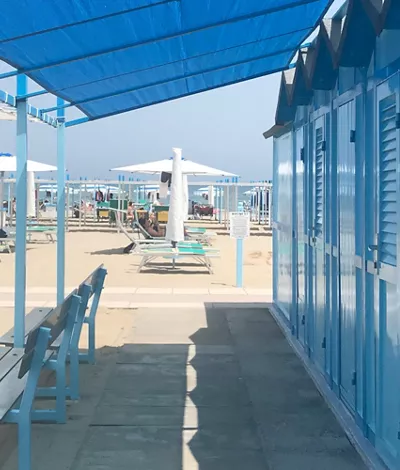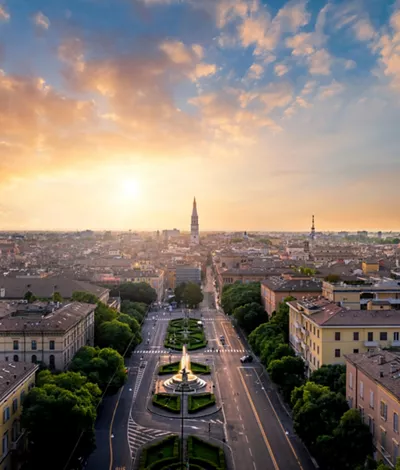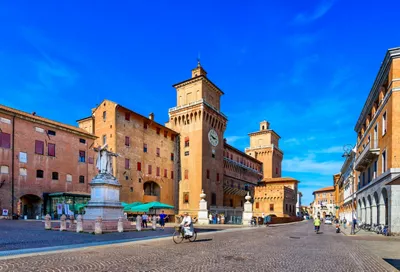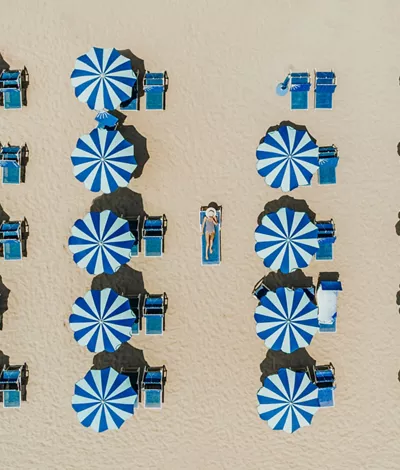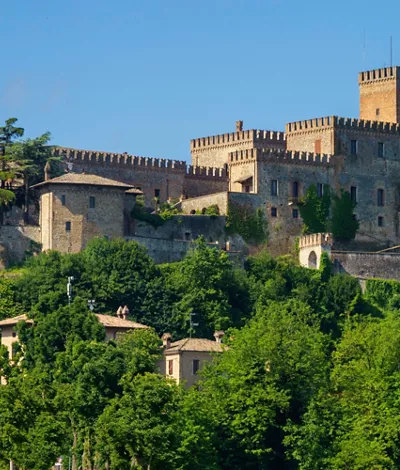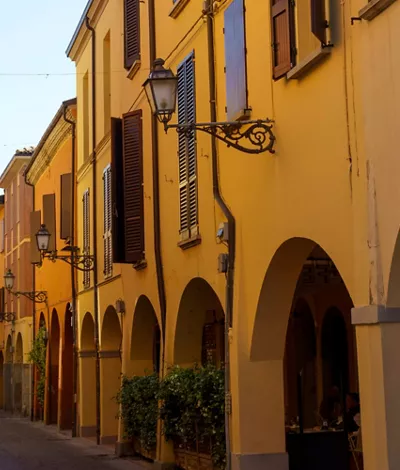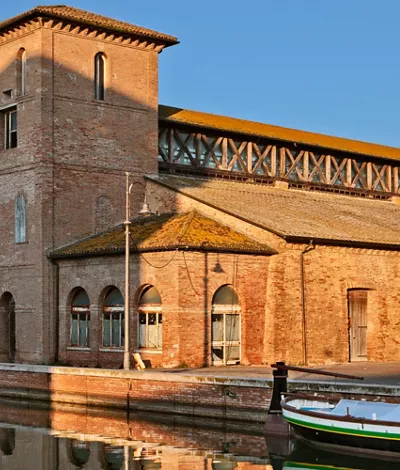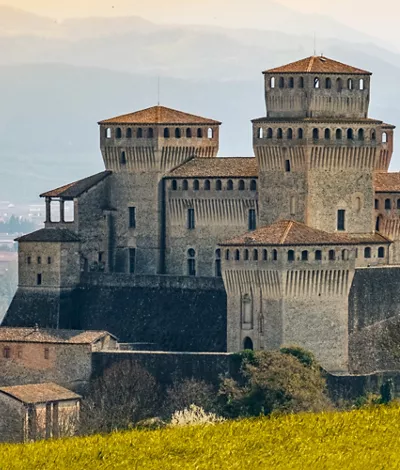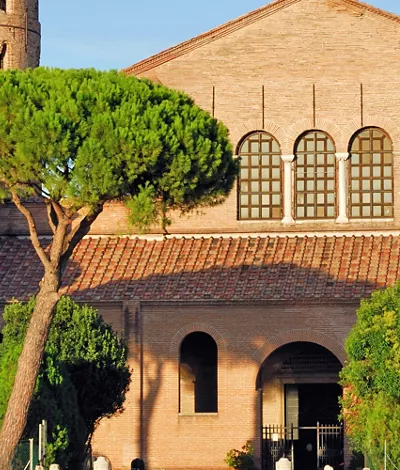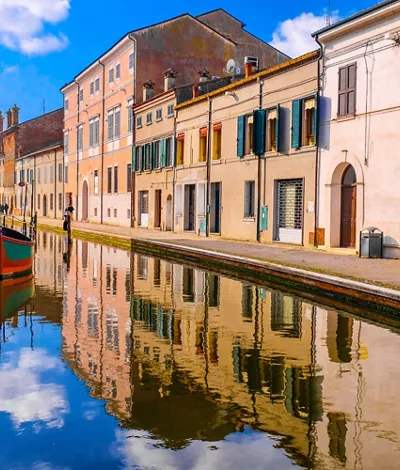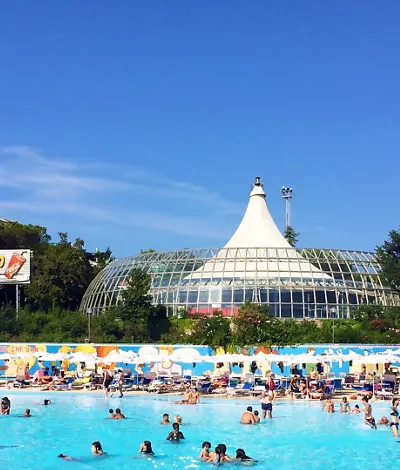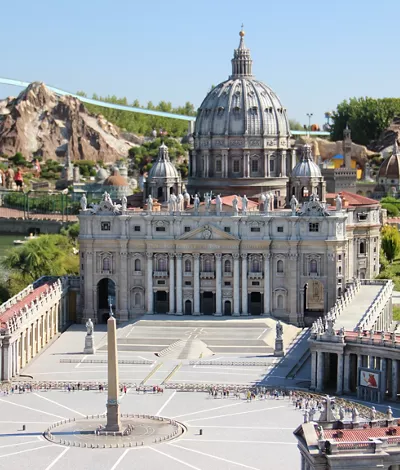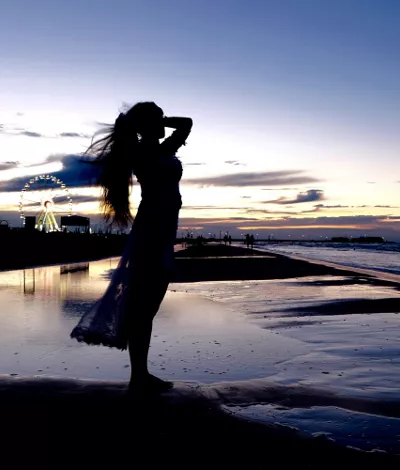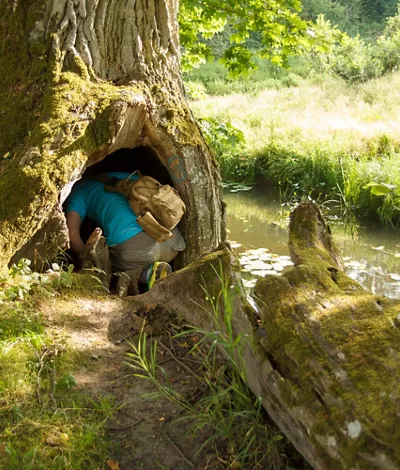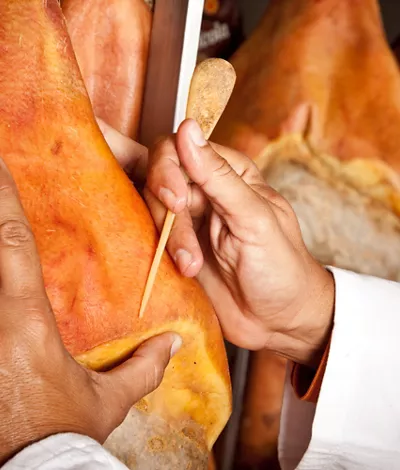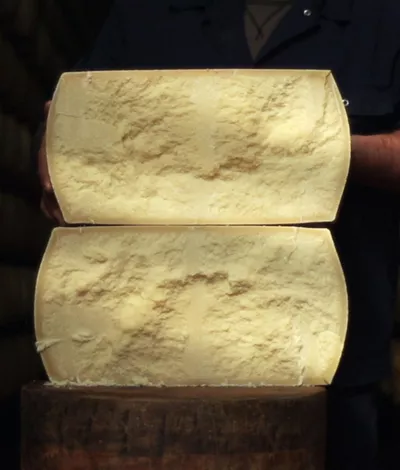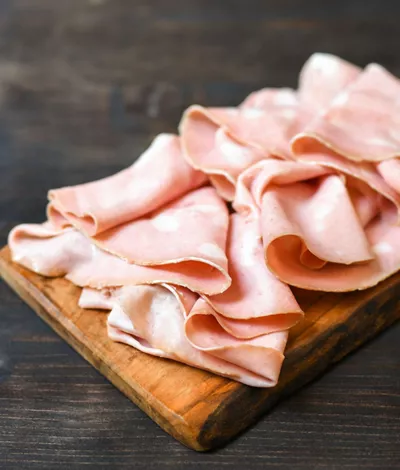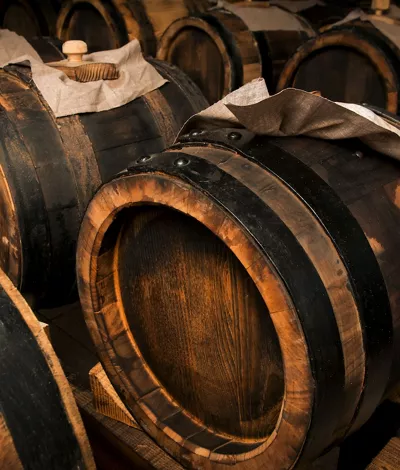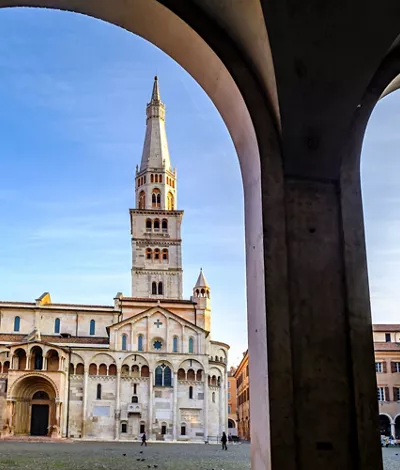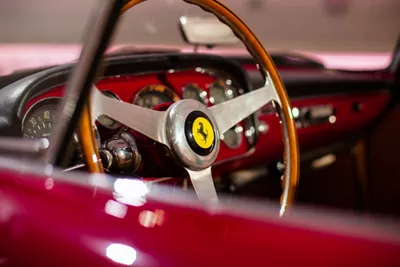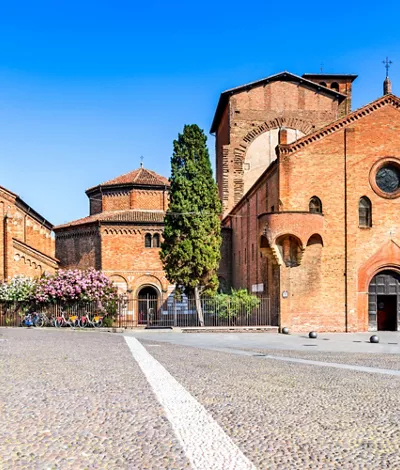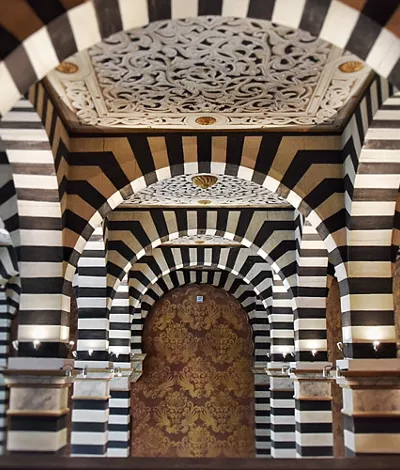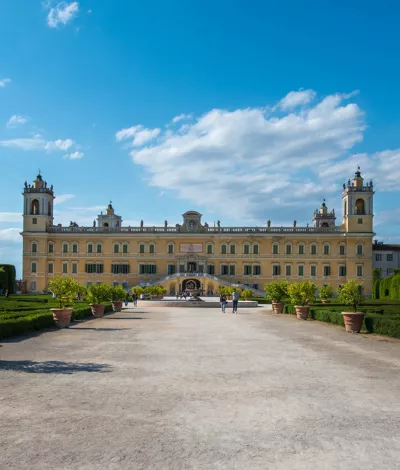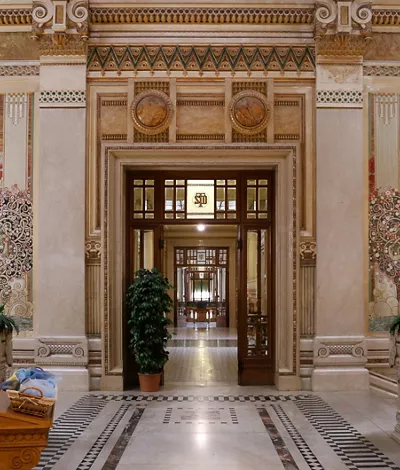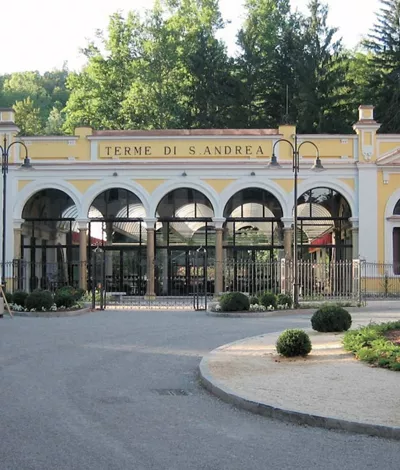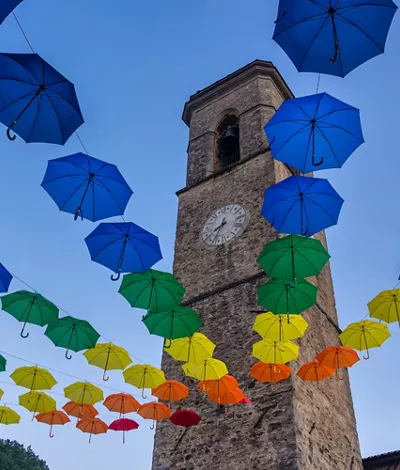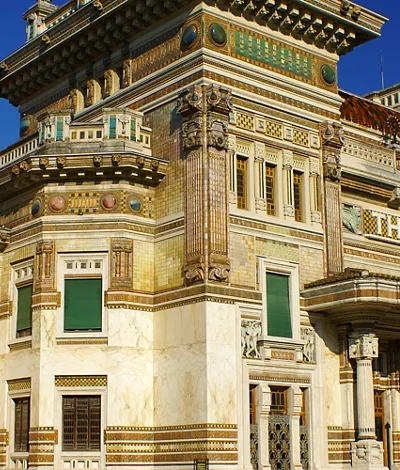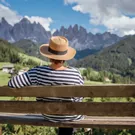Emilia Romagna, a region of unrivalled charm, with immense artistic beauty and unparalleled hospitality
Emilia Romagna with its Riviera Romagnola offers beach tourism that attracts families and young people to its shores every summer. Rich in sites of historical and cultural interest, this region boasts a world-renowned wine and food tradition. Skilful hospitality does the rest, making Emilia Romagna an ideal holiday destination in every season.
Video credits: Oliver Astrologo
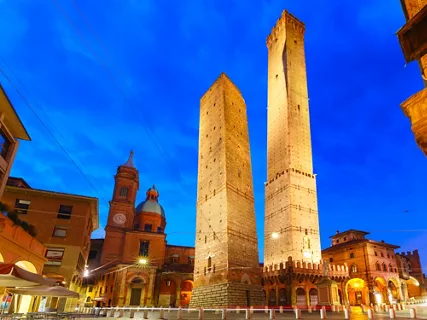
Bologna
Bologna, the delightful capital of Emilia-Romagna, is a lively city, with its blend of fascinating culture, history and delicious traditional food. Nestled among vast plains, gentle, winding valleys and rolling hills with unique and unparalleled panoramas, Bologna may be a young city, but it has an enchantingly rich history. Treat yourself to a relaxing trip, immersed in art, music and good food.
Discover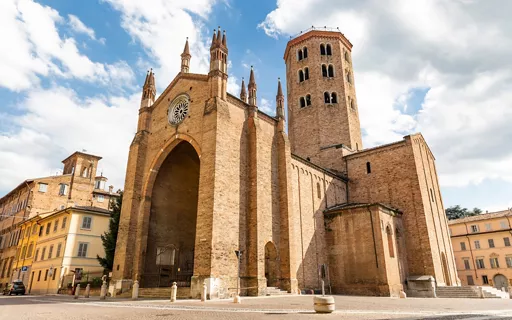
Piacenza
Piacenza, welcoming and sumptuous; Emilian, but not to excess The end of the ancient Via Emilia and geographical epicentre of the Po Valley, the city of Piacenza stands on the right-hand bank of the river Po and is - due to its position on the north-western border of the region - the least Emilian of the provincial capitals of Emilia Romagna. A compulsory stop for travellers Halfway between the Apennines and the plains, nestled between valleys and waterways, Piacenza built its fortunes on its vocation as a place of passage: Leonardo da Vinci, who made an unsuccessful bid to design the bronze doors of its cathedral, was among the first to appreciate its crucial territorial role, describing it in the Codex Atlanticus as “Terra di Passo” (land of passage), a compulsory stop for anyone on their way to Milan. An innate nature that still explains the city's irreducible vocation for welcome and hospitality. Amid arcades and secret gardens, by bicycle The etymology of the Latin name, placentia, which alludes to the capacity to please, is a successful compendium of the city's soul: pleasant, elegant and full of discreetly guarded treasures. Because of its relaxed pace and compact size, it is an ideal place to visit on foot or by bicycle, roaming through arcades and churches, capturing the beauty of the hidden courtyards of stately palaces. The horses of the Farnese family So, are you ready to begin? The ideal tour of Piacenza, amidst art and history, has to start at the popular Piazza Cavalli, the city's epicentre. It is so called because of the presence of the infamous pair of equestrian monuments honouring Ranuccio and Alessandro Farnese, father and son, once Dukes and Lords of Parma and Piacenza. Carved in the 17th century in the Baroque style by the Tuscan sculptor Francesco Mochi, they stand directly in front of the beautiful Town Hall in terracotta and white marble, known as “il Gotico”, which is said to have hosted Petrarch: they are the emblem of the town. If you hear people say “i noss cavaj”, our horses, this is what they are referring to. The ducal tour The “Farnese” tour leads to the historic Palazzo Farnese, now home to the Civic Museums, in whose picture gallery one can admire, among other works, a Tondo of the Virgin and Child by Botticelli. The archaeological wing, meanwhile, preserves the famous Fegato di Piacenza, or Piacenza Liver, a bronze model of a sheep's liver with Etruscan inscriptions, used by haruspices as a guide for prophecies. The tour is wrapped up with a visit to the Farnese Walls that encircled the historical centre in the 16th century. The Duomo, combining Romanesque and Gothic The real attraction of the city, however, is its Duomo, or Cathedral: dedicated to Saint Mary of the Assumption and Saint Justina, it brings together the original architecture, an admirable example of Emilian Romanesque, with Gothic elements of a later restructuring, and houses a dome frescoed by Guercino. But there are several other medieval churches in Piacenza worth discovering, starting from St Anthony, the city's patron saint, a compulsory stop for pilgrims on the Via Francigena, to St Savino, of early Christian origin, with mosaic floors, passing through St Mary of Campagna, with its dome frescoed by Pordenone. Here, it is said, Pope Urban II announced his intention to order the First Crusade to the Holy Land. A walk around the muntä di rat A visit to Piacenza's museums, meanwhile, has to include the Alberoni Gallery, which houses Antonello da Messina's Ecce Homo, and the Ricci Oddi Modern Art Gallery, with its works from the 19th and 20th centuries. Iconic places in the city to visit, before leaving, include the Municipal Theatre, whose façade was redesigned by Alessandro Sanquirico based on inspiration from La Scala in Milan, and the steps that connect Via Mazzini to Via San Bartolomeo, which everyone here calls the muntä di rat. This is because during the flooding of the Po, legend has it that rats used it to escape the water. Amidst hills and medieval villages: in search of food & wine delights and Bellocchio's film sets Other wonders are in store for you in the surrounding countryside, among the renowned valleys of the Piacenza hills: Val Trebbia, Val Nure, Val Tidone and Val d'Arda, to name the best known, with their scenic itineraries and food and wine delights. Not forgetting the medieval villages and castles: Castell'Arquato, Grazzano Visconti, Gropparello, Rivalta, to name but a few. For film buffs we recommend a trip to Bobbio, a delightful village in the Trebbia Valley and the setting for many films by Marco Bellocchio, who founded his Film School and a Festival dedicated to the Seventh Art here. For those who love outdoor sports, we suggest trying their hand, on foot or by bicycle, at a few stops along the Via Francigena, the ancient pilgrimage route that led from northern Europe to Rome and from there to the Holy Land.
Discover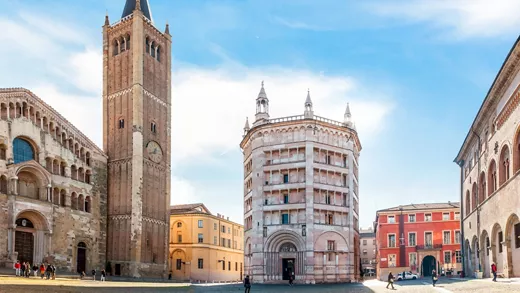
Parma
Rich Parma seduces with art, music and unparalleled food and wine tradition Parma is the second largest city in Emilia Romagna and a rare pearl: with its prestigious history, young nightlife, and its many characteristic cultural points of interest, it is also a popular destination for savouring its ancient culinary tradition that is recognised the world over.
Discover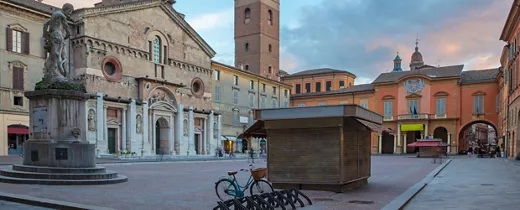
Reggio Emilia
Culture, nature and food and wine tradition The province of Reggio-Emilia is the destination par excellence when one thinks of a weekend away. Culture, nature and food and wine traditions make this area a unique place and certainly rich in opportunities. Reggio-Emilia is located about 50 kilometres from Bologna in the centre of the Po Valley. Known as the City of the Tricolour, as the birthplace of the Italian flag, it has a very elegant historic centre and a quality of life with few equals in Italy. Here, the most futuristic buildings are designed by Calatrava, you can get around by bike or on foot and there is no shortage of things to see. Seeing the many squares is a must, the Temple of the Beata Vergine della Ghiara and the Panizzi Library, hold your heads up, as the ceilings are magnificent. At the gates of the city, the Pista del Crostolo, a green route ideal for cycling, jogging or relaxing walks, begins. Don't miss a visit to the Matildic castles of Canossa, Rossena and Bianello. Plan a trip to the Po River and visit the Don Camillo and Peppone Museum in Brescello, a place of pilgrimage for lovers of black and white films. Correggio, a prestigious small Renaissance court, and Scandiano with the evocative Rocca dei Boiardo are among the not-to-be-missed stops. The table cannot be complete without cappelletti reggiani or caplètt, Parmigiano Reggiano and Traditional Balsamic Vinegar, as well as erbazzone, rice cake and a glass of Lambrusco wine.
Discover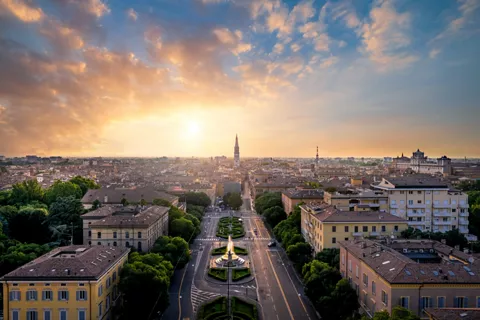
Modena
A city of art and architecture, fine food and legendary engines, Modena is truly enchanting. A jewel in the heart of Emilia Romagna where art, architecture and fine dining and wine express Italian excellence in all its glory. Modena wins all visitors’ heart through their stomach, with its priceless treasures appreciated all over the world, and of course the timeless myth of Ferrari.
Discover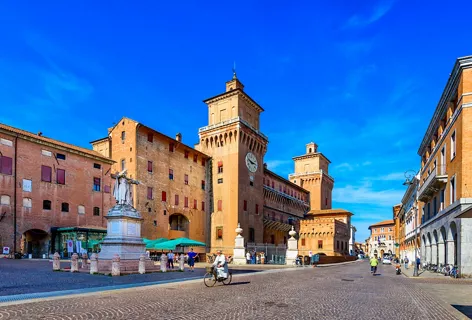
Ferrara
A small jewel of the Emilia-Romagna plain, Ferrara hosts historical and artistic wonders in a relaxing urban environment. With all the charm of a capital from the distant past, it offers boundless beauty that straddles the Middle Ages and the Renaissance. Ferrara lets you take an authentic journey back in time, exploring the old town on foot or by bicycle – the locals’ favourite means of transport. Not forgetting the traditional cuisine – to call it mouth-watering is an understatement!
Discover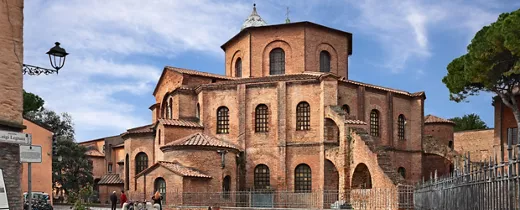
Ravenna
Ravenna: an all-round holiday of art, culture, sea, nature and adrenaline Tourists choose Ravenna because it offers everything you could ever want in a holiday. Relaxation and the sea? The beautiful Adriatic coastline is just a few kilometres away. Art and culture? Ravenna is home to fascinating UNESCO World Heritage monuments, including the Basilica of San Vitale, the Mausoleum of Galla Placidia and the Mausoleum of Theodoric, alongside other equally popular tourist sites, such as the Tomb of Dante Alighieri and the Ravenna Art Museum. Looking for some entertainment? You don’t have to travel far to enjoy the Mirabilandia amusement park or the nightlife of the Riviera Romagnola. Hungry for some fantastic food? Choose from crescione romagnolo flat bread, cappelletti pasta with ragu and passatelli pasta in broth. Sport and nature? You will find countless cycle paths and endless greenery both inside and outside the city centre. And that’s not all! This treasure trove of art and culture boasts a grandiose history, traces of which we can still discover today. Ravenna has been a capital city three times since the 5th century, first under the Western Roman Empire, then during the reign of Theodoric's Goths between 493 and 526, and finally from 553 to 751 under Byzantine rule. A historic centre of rare beauty These three periods of great splendour left their mark on the historic centre of Ravenna forever, with indelible traces such as the Mausoleum of Galla Placidia, constructed in 402 under Emperor Honorius in honour of his sister Galla Placidia, adorned inside with beautiful mosaics. The Basilica of Sant'Apollinare Nuovo and the Mausoleum, which housed the sovereign's remains until the arrival of Emperor Justinian I, who had them dispersed and consecrated this monument to Orthodox worship, date back to the period of Theodoric the Great. The construction of the Basilica of San Vitale, a masterpiece of early Christian and Byzantine art in the heart of the city, also dates back to this period. The magic of Ravenna, however, did not end with the Byzantines. From a municipality to a signoria ruled by the Papal State, Ravenna experienced another period of great prosperity, thanks in part to Guido Novello da Polenta, who welcomed to the city Dante Alighieri, who spent his final years in Ravenna. The remains of this great poet are preserved in a small neoclassical temple at the Basilica of San Francesco, while the nearby Dante Museum offers visitors a journey through the works, life and memory of the Father of Italian Literature. The Region's most beautiful sea, just a stone's throw from the city After a city tour of delightful art, culture, and food and wine, the sea awaits you just half an hour by bus, or 20 minutes by car, from the historic centre of Ravenna: 35 kilometres of coastline with nine beaches where you can relax, play sports by the sea, be pampered in hotels with all mod cons, swim, or enjoy the sunrise amid music and nightclubs. From Casalborsetti to Marina Romea, from Porto Corsini to Marina di Ravenna, down to Punta Marina Terme, Lido Adriano, Lido di Dante, Lido di Classe and Lido di Savio: you will be spoilt for choice. Greenery and nature throughout Ravenna Ravenna has no shortage of greenery. In the city, you can shelter from the sun and immerse yourself in nature in the large Public Gardens (while you're there, we recommend visiting the fascinating Planetarium) or in the Rocca Brancaleone community garden. If you are looking for unspoilt nature, you only have to travel a few kilometres in any direction to immerse yourself in enchanting landscapes. To the north, you will find the Oasis of Punte Alberete with the pine forest of San Vitale and, further up, the enormous Po Delta Park, one of Italy's most picturesque oases. To the south, be sure to take a few hours to explore the vast pine forest of Classe and visit the Basilica of Sant'Apollinare in Classe. This expansive green space covers 900 hectares and is home to magical places such as the Ortazzo and Ortazzino oases and the mouth of the Bevano River. Looking for some fun? There’s something for everyone Ravenna is the ideal stopover for anyone seeking a fun-filled holiday at any time of the day or night. The great amusement park of Mirabilandia is just a few minutes from the city, offering high-adrenalin attractions such as the Katun, the iSpeed and the park's two iconic towers, as well as plenty of options for visitors seeking quieter adventures and equipped spaces for families and children. If you like to have fun in the pool, navigating slides and rapids aboard an inflatable, Mirabeach is located behind Mirabilandia and is open every day in the summer. When it’s time for dinner, you can choose from the many restaurants in the historic centre of Ravenna or the Darsena area near the railway station. If you’re not ready for bed yet, we recommend checking out the famous Adriatic Riviera nightlife: open-air discos, trendy clubs and concerts are sure to make your holiday experience unforgettable.
Discover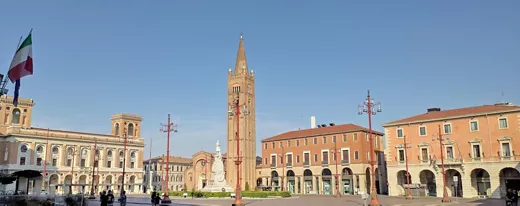
Forlì Cesena
A province to explore, among medieval fortresses, vineyards and olive groves Forlì-Cesena is a province of significant artistic and cultural interest in the southeast of Emilia Romagna. When in Forlì, be sure to visit the Romanesque Church of San Mercuriale and the Castle of Ravaldino, which is also known as the Fortress of Caterina Sforza, named after the woman who commissioned its construction. Currently, you can only admire the citadel from the outside, but you can visit the Malatesta Fortress in Cesena, overlooking Piazza del Popolo, and the Malatestiana Library, with its impressive array of books, manuscripts and incunables. Also known as “the city of the three Popes” because Pius VI, Pius VII and Benedict XIII were born there, Cesena boasts beautiful countryside dotted with vineyards and olive groves. Every year in spring when the weather starts to improve, some local venues organise picnics immersed in nature, ideal for a romantic date or with friends. The most characteristic villages in the area include Bertinoro, also known as the “Balcony of Romagna”, Rocca di Castrocaro, Predappio, a small town linked to Mussolini but with a delightful medieval centre, and Rocca San Casciano, a very small village built around the main square. During the atmospheric “Bonfire Festival” at the end of April, the village bursts into life with dancing, floats, music and, of course, spectacular fires.
Discover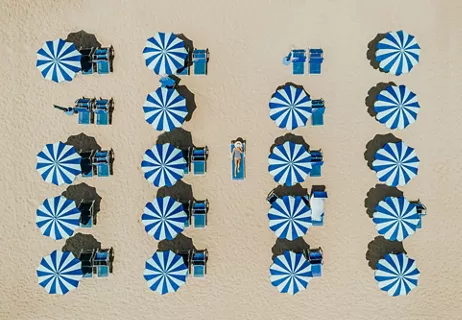
Rimini
Close to the sea and a byword for nightlife, Rimini is also a city rich in history and culture. More than two centuries of history have left unforgettable traces in the centre of Rimini, where in just a few steps you can pass from ancient Rome to Renaissance splendours and the charm of Fellini's settings. This is all just a short distance from the beaches, nightlife venues and the most popular amusement parks of the Romagna Riviera in Italy.
Discover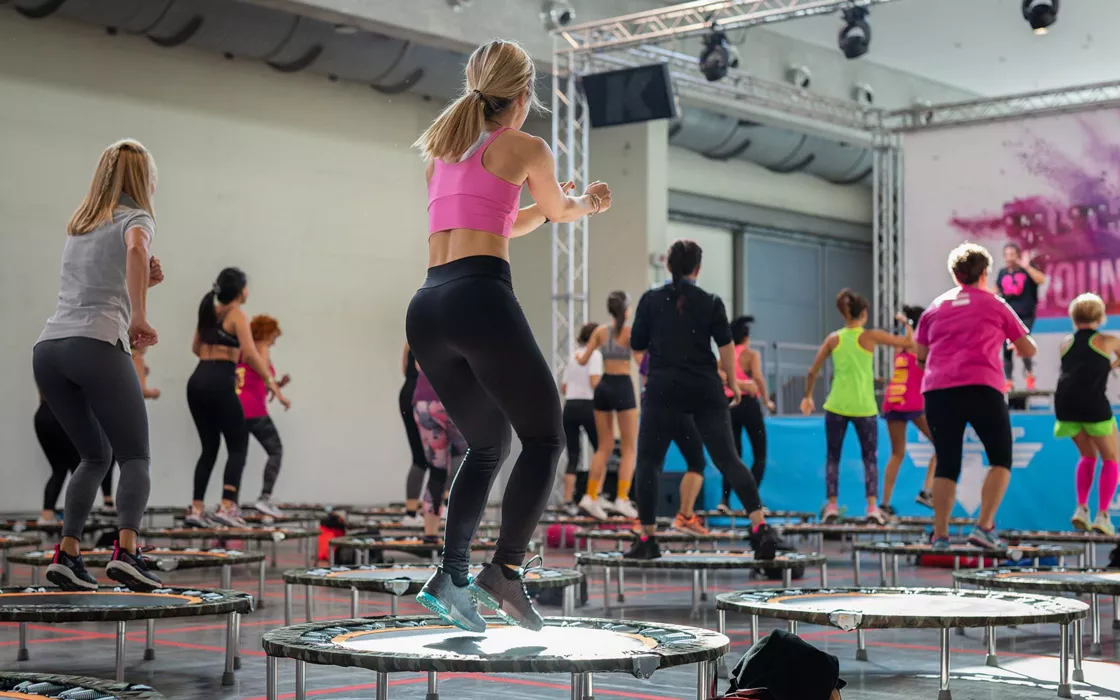
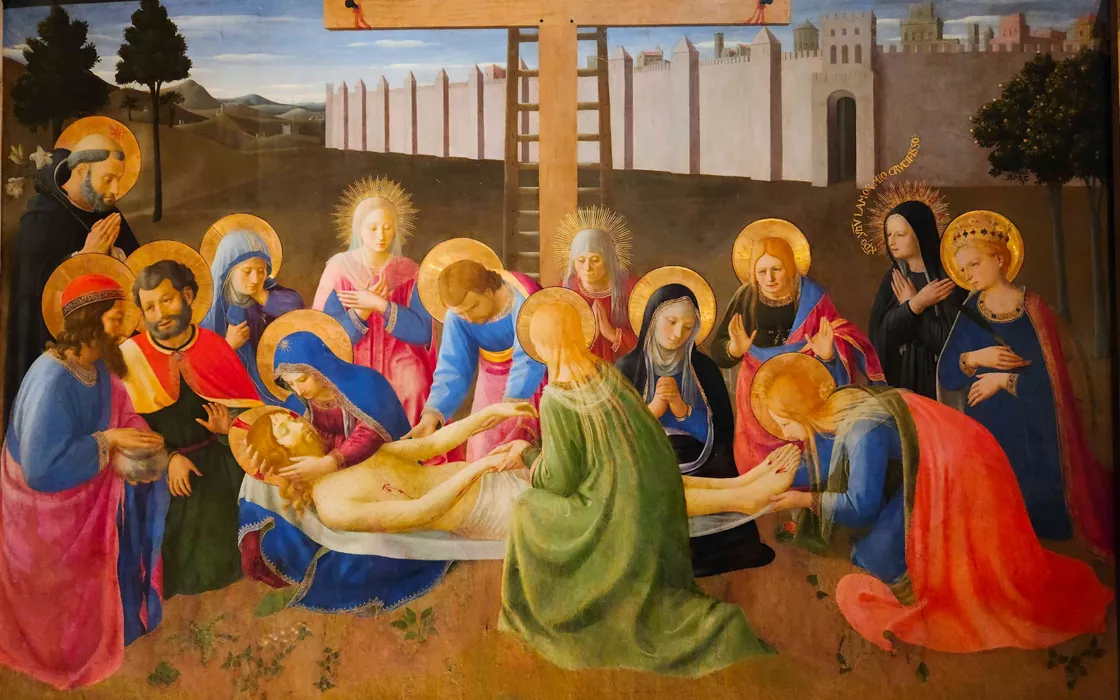
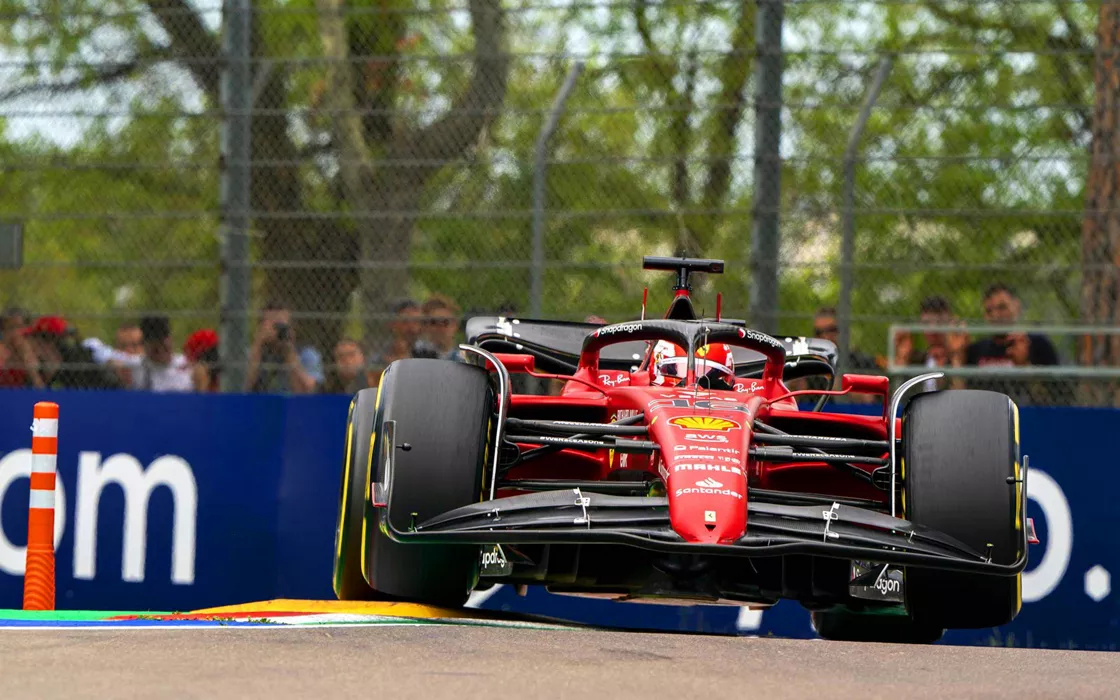

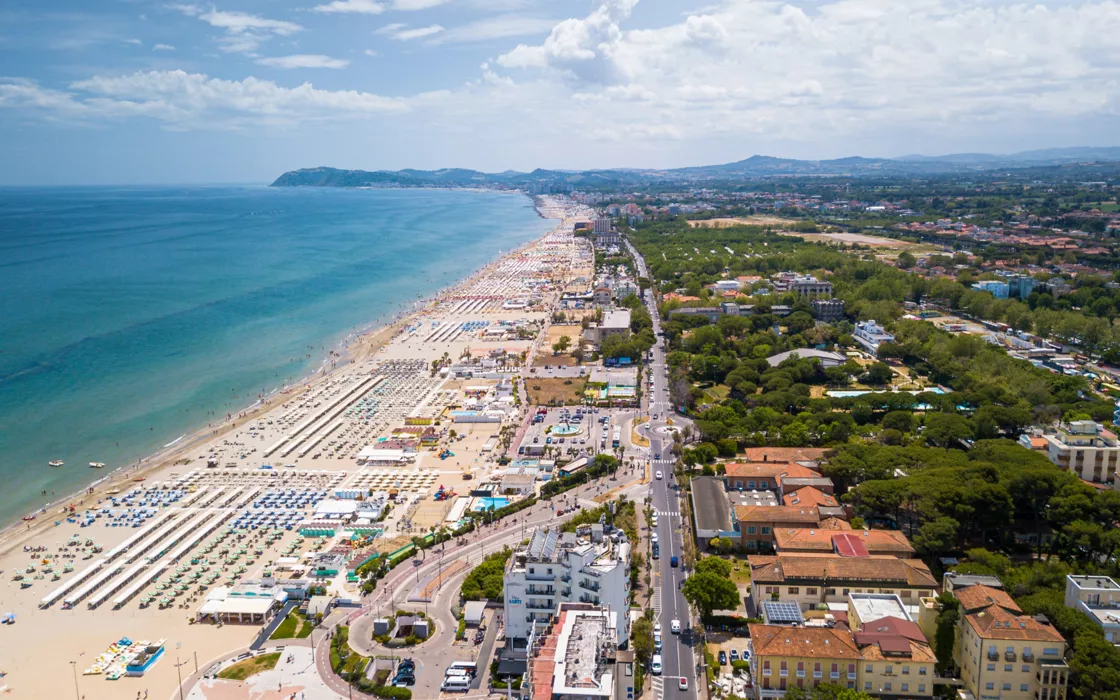
Italy in Miniature, Fiabilandia and Mirabilandia: a child-friendly trip to Romagna
Find out more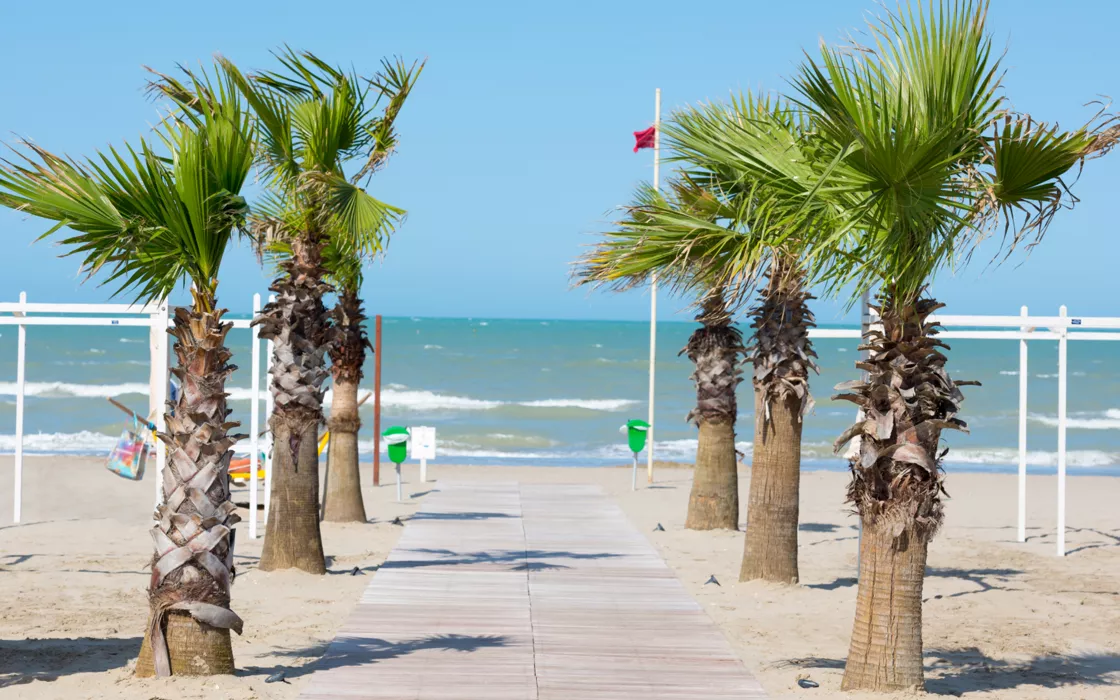
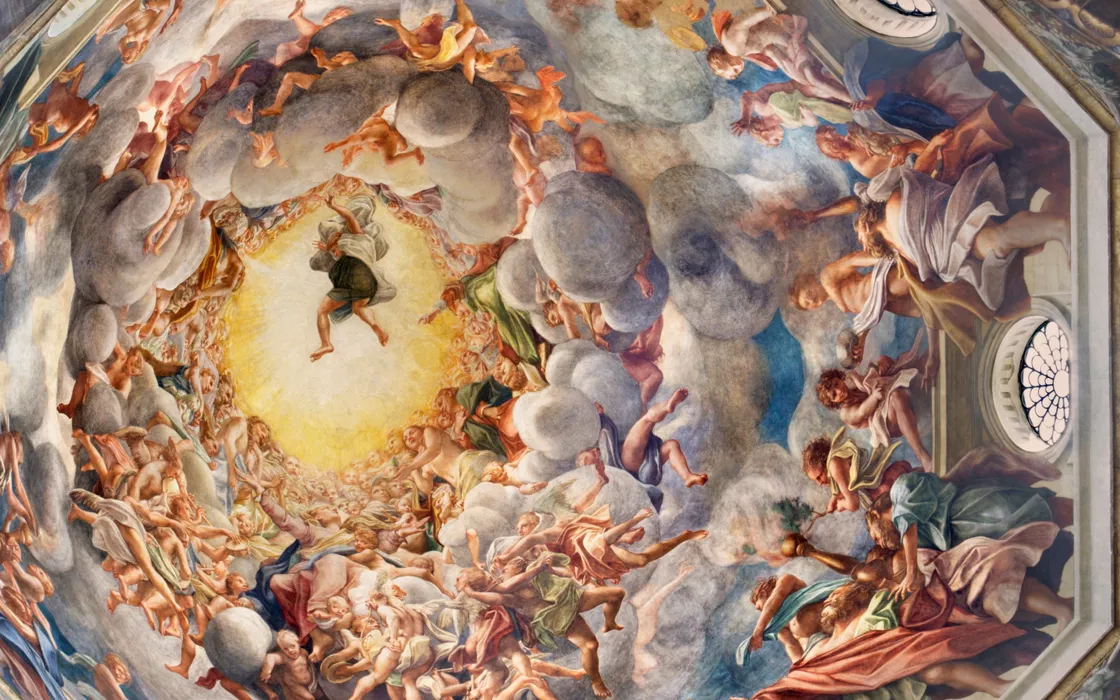
The domes in Emilia: an itinerary among churches, basilicas and cathedrals
Find out more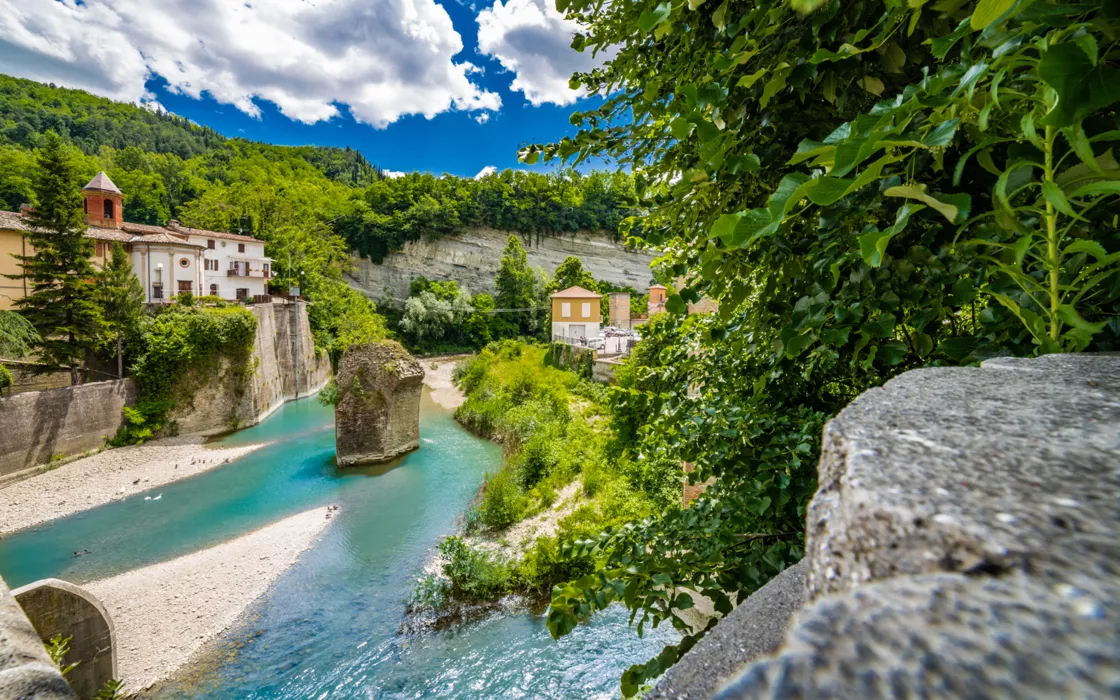
Nature and spas in Emilia Romagna: 3 days in search of the quintessence of well-being
Find out moreWhere hospitality, entertainment and good food will seduce you
Nestled between the Apennines and the Po River and facing the Adriatic Sea, rich in cities with artistic masterpieces such as Bologna, Parma and Ravenna, Emilia Romagna is a land of authentic and passionate character that has been able to transform its resources, from beaches to culinary traditions, from artistic and cultural heritage to natural beauty, into an incredible tourism and entertainment industry.
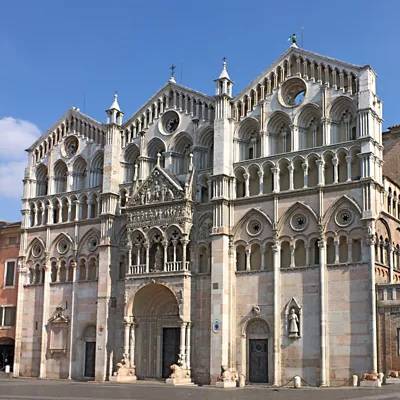

Continue living like an Italian
Subscribe to the Newsletter so as not to miss places, events and experiences for experiencing the best side of Italy: the authentic one.

Keep up to date
Would you like to learn about the most authentic experiences to be had in Italy, stay up to date on the most interesting events, discover our special offers and receive lots of insider hints and tips?


